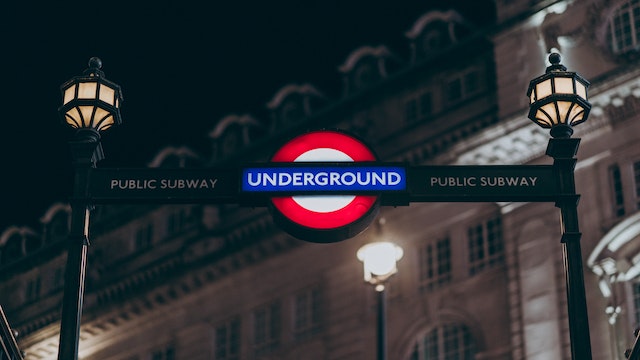
When was the first subway built? The first subway was the Metropolitan Railway line in London, opened on January 10, 1863.
The city of London mostly sprung up when the Romans settled it in about 43 AD. They made their capital city in Colchester (Camulodunum), and London (Londinium) was a convenient place for them to sail to before travelling over land to Colchester. By the 2nd century, the Romans had moved their capital to London, and the population was about 60,000 people. The Romans left Britain when their empire collapsed and London was all but abandoned for several centuries. By 680 it had become a port town again but frequent Viking raids dissuaded many people from settling there. Alfred the Great refounded London in 886 and the population began to grow. It was 18,000 people in 1100, 25,000 people in 1200, 50,000 people in 1340, and 200,000 people by 1600.
In the mid 17th century, the British Agricultural Revolution began. Various agricultural practices, such as crop rotation, a new type of plow, the introduction of new foods from the Americas, and an increase in the size of farms, caused a huge jump in the amount of food produced in Britain. This equated to a jump in the population and London rose to 650,000 people by 1750. The Agricultural Revolution was followed by the Industrial Revolution and people abandoned the countryside for the cities. The population of London had reached almost 2.5 million people by 1850. And this brings us neatly back to the subway.
The city of London had become incredibly overcrowded. It had grown much faster than it could cope with. A lot of people couldn’t live within the city and they had to commute in every day by train. In 1850, there were seven railway stations around the center of London. There were no real traffic laws and the roads around the stations became jammed with people, carts, horses, taxis, and buses. Close on 200,000 people were entering and leaving the city daily. The powers that be realized that something needed to be done.
The government banned the building of more railway stations in the city and people realized that the only possible solution was to connect them underground. The idea had been raised in the 1830s, but there was no support. In 1954, the Metropolitan Railway was granted permission to build an underground section connecting Paddington Station and King’s Cross.
They couldn’t get funding to start with because of the Crimean War, but they were ready to start building in 1859. Engineers knew how to build railway tunnels. The first railway tunnel in the UK had been built in 1795. It was a horse drawn railway carriage at the time, but became used by steam engines later. However, the engineers didn’t have any experience building a tunnel under a city. These days, it would be possible to use machines to dig deep enough to make the tunnel without upsetting the buildings above, but they didn’t yet have the technology to do that. The first underground line was built using the cut and cover method. That meant workers dug a trench, built the walls and roof of the tunnel, and then covered it up with earth. It was a sound method, but it meant they had to destroy all of the buildings in the path of the tunnel. Compensation and rebuilding was a large part of the cost of the tunnel.
The tunnel was 10.2 meters wide and they laid two tracks, 1.8 m apart. At the time, there were two different gauges of train in use, so they laid three rails. The inside one was for both types of trains, but the outer ones were for different gauges. They dug a much wider trench where the stations would be built.
After almost three years and several accidents, one of which being a burst sewer, the line was finished. It was opened in January 1963. 38,000 people used the underground on the very first day and it became extremely popular.
There was one small problem that would take a few years to iron out. The people who designed and built the Metropolitan Line believed that they would be working with “smokeless” steam engines, so the tunnel wasn’t built with very much ventilation. To that order, the trains were fitted with condensing equipment that stopped most of the steam from escaping, but not all of the steam. The tunnels and stations quickly filled with steam, but that didn’t put people off. The route covered 6 km, across 7 stations, and only took 18 minutes. There were trains every 15 minutes. The owners of the line petitioned for more ventilation, but nobody wanted ventilation ducts in their neighborhood and they had trouble getting permission. By the time they managed to get building permission, the underground had been electrified, removing the necessity. By the 1880s, the trains were electric and the underground system was significantly increased. And this is what I learned today.
Sources
https://en.wikipedia.org/wiki/London_Underground
https://en.wikipedia.org/wiki/History_of_the_London_Underground
https://en.wikipedia.org/wiki/Metropolitan_Railway
https://www.bbc.com/news/uk-england-derbyshire-22342239
